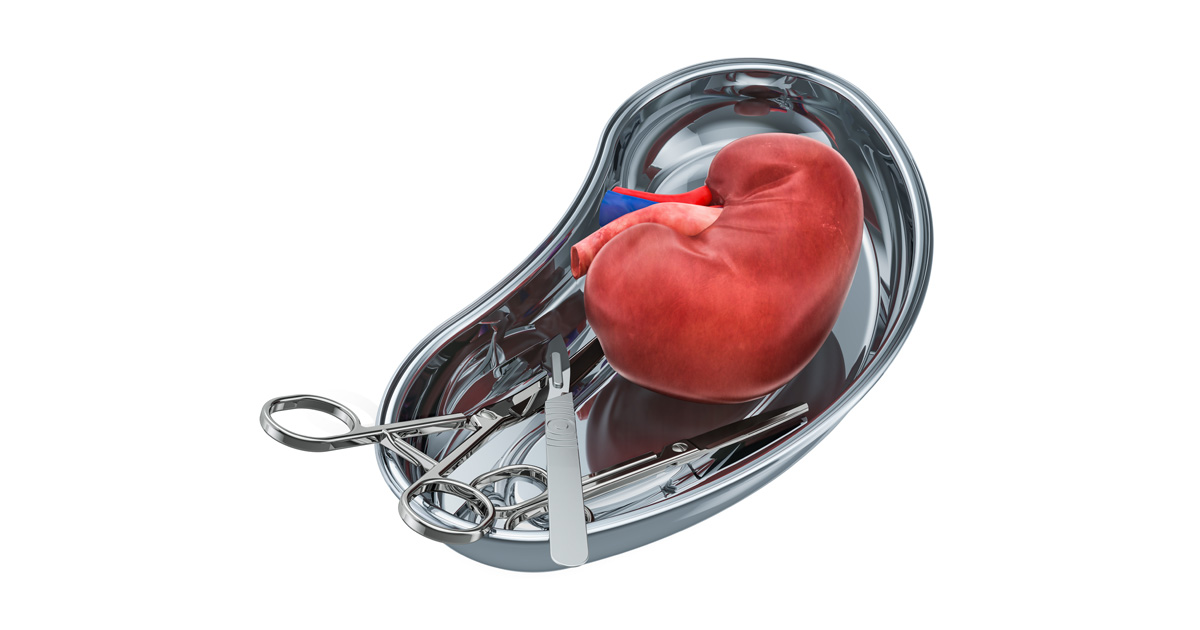National societies recommend ways to improve safety in organ transportation
At a transportation summit, four national transplantation organizations — including the American Society of Transplant Surgeons, the American Society of Transplantation, the United Network for Organ Sharing and the Association of Organ Procurement Organizations — developed a set of recommendations to ensure the safety of organ recovery teams.
According to David A. Axelrod, MD, MBA, FACS, transplant surgeon at the University of Iowa, and colleagues, solid organ transplantation requires a variety measures to ensure procedures are safely performed.
They argued that while the transplantation community has enacted national standards and protocols following other critical events (citing an incident when HIV was inadvertently transmitted to four patients, resulting in a universal system of nucleic acid testing for deceased donors), “the same diligence has not been practiced to ensure the safety of members of transplantation teams and organ procurement organization (OPO) personnel who must travel to other centers to recover lifesaving organs.”
They contended that a 2007 plane crash which led to the loss of an organ recovery team from the University of Michigan should have been an event which also resulted in action (ie, the design and implementation of “thoughtful and universal standards”) from the transplant community.
“New organ allocation policies that mandate broader sharing highlight the need to urgently address transportation safety,” they wrote.
The national standards developed at the summit are related to three primary areas of organ recovery practice: air transportation, ground transportation and insurance coverage.
Air transportation
According to Axelrod and colleagues, air travel is the “dominant concern,” as some estimates place the mortality risk during air travel for organ recovery at 1,000 times greater than the risk during commercial flights.
Air travel recommendations relate to the aircraft itself and the pilot, and include vigorous oversight procedures. The societies recommend the aircraft operate under part 135 of the Federal Aviation Administration, as opposed to part 91 which allows regulation by private entities for their sole use and is typically used by OPOs and hospitals.
“These regulations require additional safety inspections, replacement of time-limited components, enhanced training requirements and advanced navigation equipment for aircraft which can be chartered by third parties,” they wrote. Furthermore, aircrafts should be required to fly under instrument flight regulations with air traffic control guidance (vs. visual flight rules).

Regarding pilot safety, the societies suggested all pilots be certified to fly the aircraft independently as captain and that two pilots fly on all trips with organ recovery teams on board. Pilots should also undergo regular training and, the authors wrote, “should not be pressured to sacrifice safety for the purpose of the ‘mission.’”
Ground transportation
According to the authors, ground transportation is also potentially hazardous and can result in injuries to the organ procurement team.
“Team members need to travel to distant centers while minimizing cold ischemic times in unpredictable weather,” they wrote. “Current ground transportation varies widely and includes OPO owned and operated vehicles, independently contracted transportation companies and local ambulance providers.”
They recommend that organ recovery teams travel in a vehicle that is either owned by the OPO or that has been directly contracted. Most desirable, according to the authors, is an SUV or van with forward-facing seating with restraints. They also advise against ambulance travel because, on average, 4,500 ambulance collisions, 29 fatal crashes and 33 fatalities occur per year.
All vehicles should also undergo annual safety inspection.
As for the drivers, the authors suggest they complete an emergency vehicle operations course and maintain the certification. In addition, drivers need to be given adequate rest periods and undergo routine monitoring of their driving record.
Insurance
While, the authors suggested, “prevention of accidents is the primary goal of safety standards in organ procurement travel,” adequate liability insurance coverage should be obtained to protect team members and their families in the event of an accident.
According to the authors, a survey from 2009 demonstrated 29.3% of respondents were unsure if they had life insurance that would cover them during procurement travel. Therefore, the authors contended, the adoption of standard procedures for obtaining insurance is needed.
“Summit participants strongly believe that policies and resulting payments must be exclusive of any employer-offered or personal life, disability, and/or worker's compensation insurance reflecting the unique risks involved in organ recovery transportation,” they wrote.
As both air and ground travel companies have liability insurance, the authors recommend the OPO or transplant center “be added as a covered entity.”
OPOs should also obtain business travel accident insurance, according to the societies, “with coverage minimum of four times annual salary for death or permanent disability (including a minimal benefit for trainees).”
Future initiatives
The summit also addressed some future initiatives that the authors noted could enhance the safety of organ recovery teams. These include the following:
- use of local recovery teams;
- centralized recovery centers;
- improved organ preservation technology; and
- drone transport
“Given changes in organ allocation which have resulted in a significant and sustained increase in the frequency of air travel for organ recovery, it is time to ensure that appropriate safety standards are universally applied,” the authors concluded. “Broad implementation will require a joint effort from clinicians, OPO personnel and transportation providers who must become active advocates for a safe transport on the ground and in the air.” – by Melissa J. Webb
Disclosures: Axelrod reports consulting with CareDx. Please see the study for all other authors’ relevant financial disclosures.

